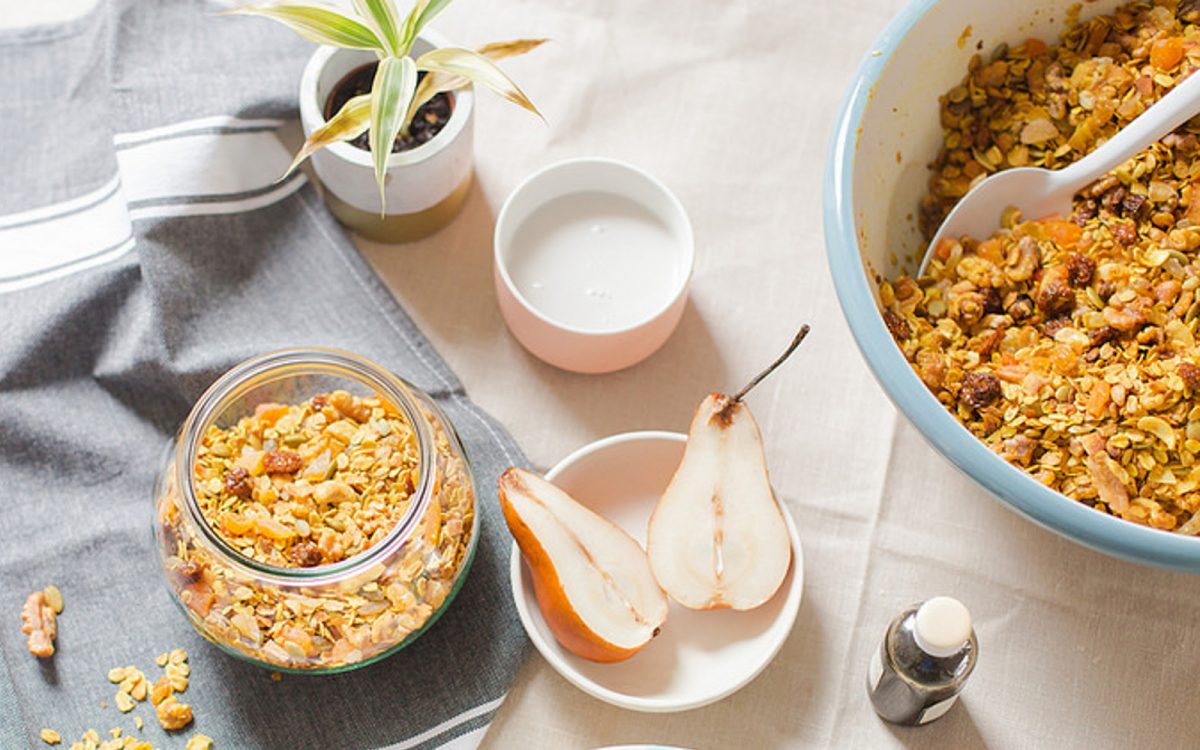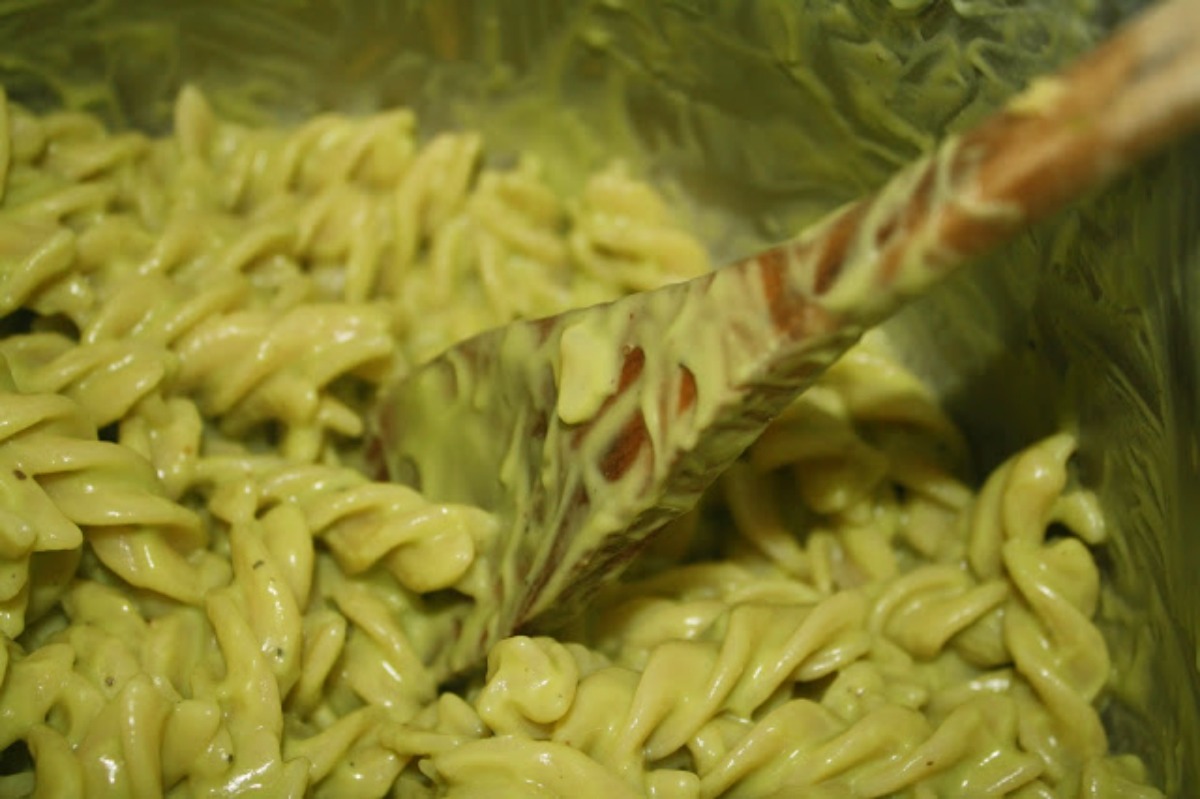
As an adult, while a balanced diet is absolutely essential, there’s some leniency when it comes to playing around with our diet, finding out what works and what doesn’t, what we’re sensitive to and what plays well with our digestive tract.
Even though some of the same guidelines are true for children — yes, your child’s stomach can be just as temperamental as yours and, yes, your child can have allergies and food sensitivities too! — the practice of excluding foods is far more dangerous.
That’s because a child’s body requires a slew of nutrients in order to … well … grow.
A rapidly growing and developing young body requires large amounts of a variety of nutrients. Take into consideration that the human body isn’t able to create 100 percent of the vitamins and minerals that it needs. Instead, your child needs to get these from their diet. On top of that, if a child’s diet is deficient in certain macronutrients, — carbs, protein, and fat, — vitamins, and minerals, their growth can be stunted and their overall health and well being could be detrimentally affected for the rest of their life.
The task of nutrition becomes an even bigger beast if you choose to practice a plant-based lifestyle. While you definitely can source all of the necessary nutrients, it takes a bit more due diligence on your part — the parent — to make sure your child is receiving all the goodies they need on a daily basis. Going big and beyond in variety and diversity is an awesome technique! Working with a nutritionist, dietitian, or your family doctor is an excellent idea. Plus, it doesn’t hurt to have a good child-friendly plant-based nutrition book on hand for reference.
So, let’s take a deep dive into childhood plant-based nutrition!

When working out nutrition for your child, a great place to start is making sure you’re including what’s called the big nine nutrients in their diet every day. The big nine include protein, healthy carbohydrates, healthy fat, calcium, iron, folate, fiber, vitamin A, and vitamin C.
To be clear, there are definitely more nutrients that are important for a child’s diet. The big nine simply refers to the vital nutrients that are necessary for proper growth and bodily function.
1. Protein
Protein is referred to as the building blocks of life for good reason. This macronutrient — created from amino acids — “plays an essential role in many bodily functions, including recovery and repair of tissues in the muscles, skin, organs, blood hair, and nails.” With that said, the human body only produces 11 of the 20 amino acids that make up a complete protein. This means that 9 amino acids need to be sourced from our diet. A child who is deficient in protein may “experience health issues, including fatigue, poor concentration, slowed growth, bone and joint pain, delayed wound healing and decreased immune response.”
When it comes to figuring out how much protein is necessary to avoid a deficiency, it all depends on the age. Between the ages of one to three, a child requires at least 13 grams of protein per day. A child ages four to eight requires at least 19 grams of protein per day. A child ages nine to thirteen requires at least 34 grams of protein per day.
Luckily, there are quite a few sources of plant-based protein to choose from including legumes, — such as beans, chickpeas, peas, and lentils — nuts and seeds, — such as almonds, pistachios, and chia seeds — soy products, — such as tempeh, tofu, and edamame — and grains, — such as teff, quinoa, whole-wheat pasta, and wild rice — and even a few vegetables — such as Brussels sprouts, yellow sweet corn, potatoes, broccoli, and asparagus.
2. Healthy Carbohydrates
When it comes to carbs for kids, they are essential! With that said, just like adults, you want to select healthy carbohydrates. This means avoiding refined grains such as white flour bread, pasta, and baked goods and, instead, incorporating whole wheat products, grains, and vegetables. Carbohydrates provide the preferred source of fuel — glucose — for “active brains and growing muscles,” plus carbs happen to include diverse nutrients as they span the food spectrum.
As carbohydrates make up many different food groups — from fruits to veggies to grains — there isn’t one specific breakdown of the daily recommended carbohydrate intake for children. With that said, if you follow the recommended daily intake of the rest of the nine nutrients, then you’re kiddo will get all they need!
Choosing the best carbs comes down to your child’s preference. With that said, opt to have nutrient-rich carbs on hand that “provide vitamins, minerals, and fiber,” such as whole-grain bread and pasta, “brown rice, potatoes, fruit, peas, and beans.” Examples of healthy carbohydrates also include certain starchy veggies — such as “potato, corn, parsnip, sweet potato, and pumpkin” — and pretty much all fruit, which contains carbohydrates called fructose and glucose.
3. Healthy Fat
Even though fat has been demonized for years, it turns out it’s actually an essential component of your child’s diet.
Healthy fats — such as monounsaturated, polyunsaturated, omega fatty acids, and moderate amounts of saturated fat — are macronutrients that “the body uses to build nerve tissue (including the brain and nerves) and hormones,” as well as burn for fuel. On top of that, healthy fats “help the body absorb some vitamins,” —such as fat-soluble vitamins A, D, E, and K — “insulate all nervous system tissues in the body,” and are also an integral component of satiation, which helps avoid overeating. This makes healthy fat intake a hugely important part of your child’s developing brain and body.
The American Heart Association recommends to “keep total fat intake between 30 to 35 percent of calories for children [two] to [three] years of age and between 25 to 35 percent of calories for children and adolescents [four] to 18 years of age.” They also recommend to source most of those fats in the form of polyunsaturated and monounsaturated fatty acids.
Plant-based healthy fats are plentiful in many oils including olive oil, avocado oil, and coconut oil. Steer clear of vegetable oils, as these contain unstable compounds called polyunsaturated fatty acids. You can also source healthy fat from nuts, seeds, avocado, and coconut products — such as coconut meat, shavings, coconut cream, and full-fat coconut milk.
4. Calcium
We know that calcium is super important as you age to avoid bone fractures, but did you know it’s just as important for the healthy development of your child?
Calcium “is a nutrient that builds strong bones,” “keeps the nerves and muscles working,” and it also “plays a role in keeping the heart healthy.” When it comes to bone strength, it turns out that the amount of calcium we get as kids and teens protects us “against bone loss later in life.” Therefore, it’s super important to make sure your child is getting the proper amount of calcium throughout their adolescent life. Plus, a calcium deficiency — in conjunction with a vitamin D deficiency — can lead to a disease called rickets, which “softens the bones and causes bow legs, stunted growth, and sometimes sore or weak muscles.”
Babies and infants receive “calcium from breast milk or formula” and generally require around 200 mg a day — younger than six months — and about 260 mg a day — between six and 11 months old. Children between the ages of one and three require 700 mg a day. Children between the ages of four to eight require 1,000 mg of calcium a day. Children and teens between nine to 18 years old require 1,300 mg a day.
When it comes to calcium, you may think your best bet is dairy, yet there are many other dairy-free, plant-based options to source that much needed nutrient! Some of the best sources include leafy greens, nuts and seeds, — such as almonds, chia seeds, and sesame seeds — legumes, — such as white and navy beans — grains, — such as millet and amaranth — fruits, — such as oranges, dried figs, and baobab fruit — and veggies — such as broccoli and bok choy. A few other awesome calcium sources include spirulina, tofu, soy yogurt, blackstrap molasses, and tahini, but these may be a bit harder to sneak into your kids daily menu!
5. Iron
As a plant-based eater, you probably already know that iron is both important and a bit harder to get on a solely plant-based diet. Yet, when it comes to children, iron is even more important.
Iron is a “mineral found in plants and animals and all living things” and it happens to be an “important component of hemoglobin, the part of red blood cells that carries oxygen from the lungs to the body,” by carrying “oxygen in the blood, so oxygen gets to where it needs to go.” When a child (or adult) suffers from an iron deficiency, it means “the body can’t make hemoglobin and makes fewer red blood cells,” which means that the “tissues and organs won’t get the oxygen they need.”
The recommended daily amount of iron changes as your child grows. Infants between seven and 12 months require 11 mg a day, toddlers between one and three require 7 mg a day, kids between four and eight require 10 mg a day, while older kids between nine and 13 require 8 mg a day. As your child ages, you’ll also need to take gender into account. While teen boys require 11 mg of iron a day, teen girls require 15 mg due to menstruating.
Make sure to diversify your sources of iron! A few great sources include seeds, — hemp, pumpkin, and chia — nuts, — cashews, almonds, peanuts (and peanut butter!) — leafy greens, legumes, oats, some fruit, — prunes, raisins, and figs — a few grains, — quinoa and teff — and cacao beans, plus 100 percent raw cacao.
6. Folate
During pregnancy folate — also called vitamin B9 — is an essential component of a healthy diet and happens to be one of the most important ingredients in a prenatal vitamin. In utero, folate is vital to help avoid neural tube defects and is integral for brain development.
The importance of folate doesn’t stop once the baby is born. This vitamin is just as important for development and growth. When it comes to childhood development, folate “helps make DNA, which guides the formation and function of our cells.” For example, a kid’s body “replaces all the cells in the small intestine about every five days.” Folate is also essential for the creation of red blood cells, brain development, and brain function.
The National Institutes of Health recommend a daily intake of 65 mcg up to six months old, 80 mcg from eight months to 12 months, 150 mcg from one to three years, 200 mcg from four to eight years, 300 mcg from nine to 13 years, and 400 mcg from 14 to 18 years of age.
Looking for some of the best folate sources in the plant-based world? Try lima beans, leafy greens, asparagus, green peas, cauliflower, broccoli, Brussels sprouts, beets, carrots, winter squash, and tomatoes.
7. Fiber
Dietary fiber is one of the most important nutrients for our digestive system health. It not only feeds our gut microbiome — that ecosystem of healthy bacteria that affects our overall bodily health — but it also keeps our digestion smooth and our tummies full.
While fiber is a type of carbohydrate, it’s harder for the body to break down meaning it bulks up our stool and ferments within the digestive system, feeding our bodies and creating rhythmic digestion. There are two types of fiber — soluble and insoluble — and children need both! High fiber consumption has also been linked to lower cholesterol and the prevention of heart disease and diabetes.
While there currently isn’t a recommended daily intake of fiber for children under the age of two, there is a Daily Reference Intake suggestion. For children between the ages of one and three, it’s recommended to get around 19 grams of fiber per day. Children between the ages of four and eight are recommended around 25 grams. After the age of eight, gender comes into play. Female children between the age of nine and 13 are recommended 26 grams, while male children are recommended 31 grams.
When it comes to sourcing fiber from your diet, you’ve got lots of options! Yet, some of the most fiber-rich plant-based sources include lots of fruits — the highest being pears, strawberries, avocado, apples, raspberries, and bananas — certain veggies — the highest being carrots, beets, broccoli, artichoke, sweet potatoes, and Brussels sprouts, — legumes, — the highest being lentils, kidney beans, split peas, and chickpeas — grains, — the best sources are oats and quinoa — and nuts and seeds — the highest being almonds and chia seeds. Plus, don’t forget dark chocolate! A great kid-friendly fiber source.
8. Vitamin A
It’s true that a growing body needs all the vitamins, yet when it comes to the most vital you’ll want to add vitamin A to the list.
Vitamin A — a fat-soluble vitamin in need of those healthy fats to be absorbed! — is incredibly important for both adults and children. It plays “an important role in vision and bone growth and helps protect the body from infections.” This means, for a growing body, getting enough vitamin A is crucial for proper eye and bone development. On top of that, vitamin A “promotes the health and growth of cells and tissues in the body, particularly those in the hair, nails, and skin,” and is also crucial for the function of “the heart, lungs, kidneys, and other organs.”
Infants up to six months of age should receive at least 400 mcg daily with only a slight increase to 500 mcg for infants between seven and 12 months. Children between the ages of one and three should consume 300 mcg daily. Children between the ages of four and eight should consume 400 mcg daily. Children and teens between the ages of eight and 13 should consume 600 mcg daily.
Vitamin A in the form of provitamin A — also called beta-carotene — is “found in fruits, vegetables, and other plant-based” foods. There are lots of options for getting an ample dose of this vitamin including leafy greens, sweet potatoes, pumpkin, carrots, winter squash, wheatgrass, grapefruit, cantaloupe, red and orange bell peppers, and goji berries.
9. Vitamin C
What other vitamins should you add to your children’s essential nutrient list? Vitamin C, of course!
You probably already know that vitamin C is great for boosting your immune system, but this water-soluble nutrient “acts an antioxidant, helping to protect cells from damage caused by free radicals,” is necessary “to make collagen, a protein required to help wounds heal,” and boosts the “absorption of iron from plant-based foods.” When it comes to growth, vitamin C is vital! It “helps form and repair red blood cells, bones, and tissues” and also helps “your child’s gums stay healthy and strengthens your child’s blood vessels, minimizing bruising from falls and scrapes.”
Infants up to six months of age are recommended to receive 40 milligrams. Babies between the ages of seven and 12 months are recommended to receive 50 milligrams. Children between the ages of one and three years of age are recommended to receive 15 milligrams. Children between the ages of four and eight years of age are recommended to receive 25 milligrams. Children between the ages of nine and 13 years of age are recommended to receive 45 milligrams.
Vitamin C is resplendent in the plant-based world including all leafy greens, veggies, and fruits, as well as chestnuts, sauerkraut, kimchi, apple cider vinegar, cacao beans, and superfood berries — such as mulberries, goldenberries, goji berries, and camu camu.
Source: Turmeric Granola with Goldenberry
We’ve got the big nine nutrients down pat, now it’s time to figure out tasty, easy, and simple recipes to make sure your kiddo is actually consuming these foods. Luckily, there are tons of creative ways to prepare healthy plant-based foods so that children will enjoy them. Here are a few that will get you going!
1. Peanut Butter and Jelly Cups
Source: Peanut Butter and Jelly Cups
What’s a childhood without cookies? I remember my mom’s chocolate chip cookies were the best in the world (and still are!). Of course, it’s important to avoid refined sugar intake as this causes your child’s blood sugar to spike, their energy to skyrocket, and then the dreaded sugar crash later on. Plus, excess sugar intake can lead to inflammation, in both adults and children. This Peanut Butter and Jelly Cups recipe by Leah Moldowan doesn’t play along the traditional “cookie” lines, but they’re a great nutrient-rich, low-sugar treat for kids! These cups are packed full of peanut flour and chia seed-sourced protein, coconut oil-sourced healthy fats, and a slew of vitamins and minerals from fresh berries.
2. Crispy Seitan Fingers
Source: Crispy Seitan Fingers
Chicken fingers may be a kids classic, but they’re usually made with antibiotic-pumped chicken, refined white flour bread, and fried up in vegetable oils. All the things you want to avoid for your child’s growing body. This Crispy Seitan Fingers recipe by Casey Muir Taylor is a one-of-a-kind, completely plant-based, super healthy option to achieve a similar classic. This recipe also hits many of the “big nine” with protein and fiber-rich seitan and whole-wheat bread crumbs, as well as vitamin and mineral-rich (especially iron and calcium) nutritional yeast, mixed greens, and sprouts.
3. Sleepy Sunday Avocado Pasta
Source: Sleepy Sunday Avocado Pasta
Next to cookies and chicken fingers, pasta is a must-have dish! It’s super easy to make and can be loaded with nutrients if done right. For instance, swap out white flour pasta for a whole-wheat version or even a spiralized veggie, such as sweet potato or zucchini. This Sleepy Sunday Avocado Pasta recipe by Natasha Condie is that perfect mix of lazy and super nutritious. It’s filled with all those healthy fats and loads of vitamins and minerals from avocado, plus this recipe calls for a dash of nutritional yeast for an extra amp of nutrients.
For those of you interested in eating more plant-based, we highly recommend downloading the Food Monster App — with over 15,000 delicious recipes. It is the largest plant-based recipe resource to help reduce your environmental footprint, save animals, and get healthy! And, while you are at it, we encourage you to also learn about the environmental and health benefits of a plant-based diet.
Here are some great resources to get you started:
For more Animal, Earth, Life, Vegan Food, Health, and Recipe content published daily, subscribe to the One Green Planet Newsletter! Lastly, being publicly-funded gives us a greater chance to continue providing you with high-quality content. Please consider supporting us by donating!



